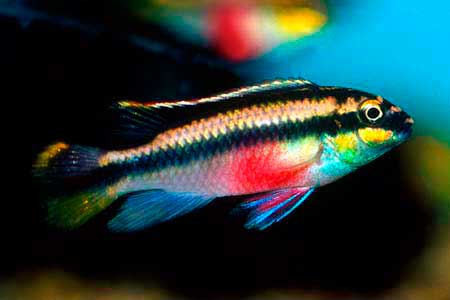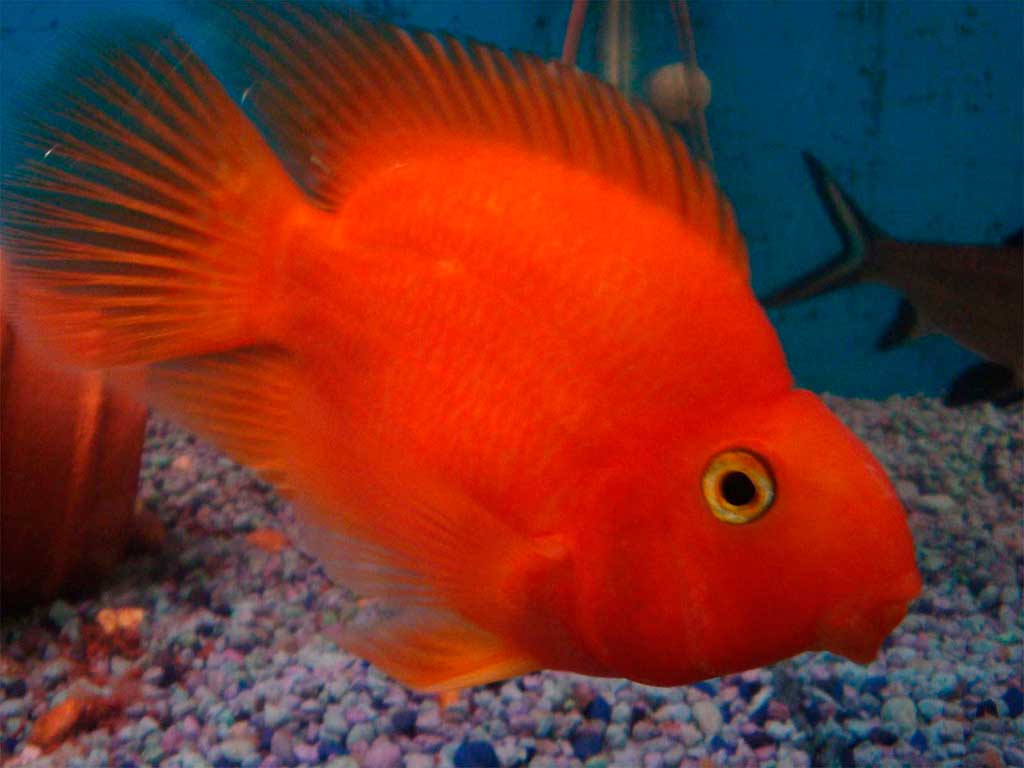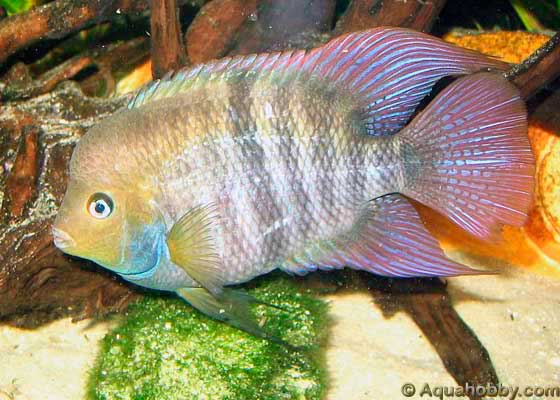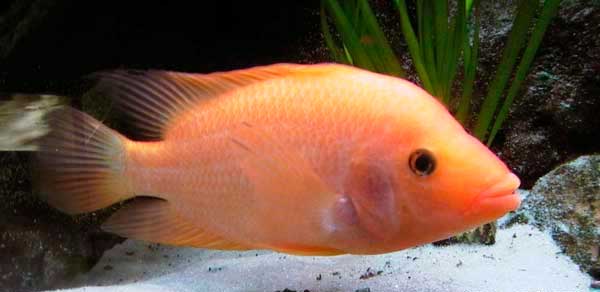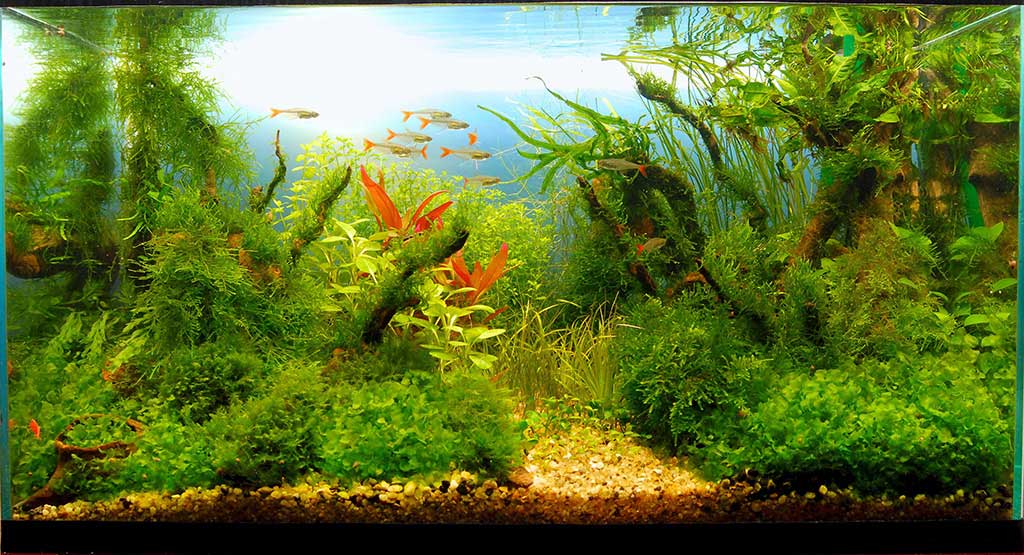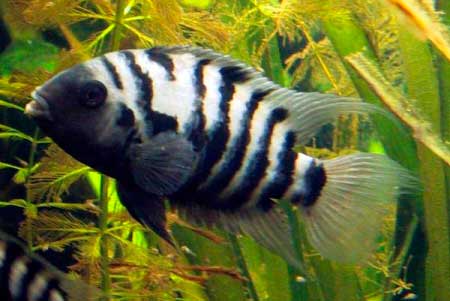Fish aquarium parrotfish as if created by nature itself for those who want to get acquainted with the wonderful world of cichlids, but does not have the opportunity to place at home a large aquarium. For these fish is enough reservoir capacity of about fifty liters. By cichlid standards, just so modest in size.
Aquarium parrotfish belong to the so-called dwarf or small cichlids. Small size, bright coloration, easily distinguishable sex, relatively peaceful disposition make this fish desirable in any aquarium.
Pelvicachromis pulcher is a native of western Africa. It lives there in river basins preferring places where dense vegetation alternates with glades of bare ground. The river bottom is more often sandy.
Aquarium parrotfish Appearance and habits
Aquarium parrotfish are up to five centimeters long. The body has an oblong shape characteristic of most cichlids. Dorsal and anal fins stretch almost to the tail fin slightly rounded. Along the body along the midline stretches a dark band of the abdomen is colored in red shades of pale pink to bright purple, depending on whether they are spawning at the moment or not, as well as from their emotional state. The first rays of fins have turquoise coloration. Coloration is more pronounced during spawning. In the male anal and dorsal fins are pointed at the ends, in the female they are rounded. The female is more modest in size and has a more rounded abdomen.
Compatibility as already mentioned they are good. They can be kept even in the same aquarium with such peaceful representatives of the underwater world as characin fish. But during spawning to the nest will not let anyone near the nest, will give a worthy rebuff even the majority of representatives of labyrinth fish.
Aquarium and its equipment
A water body of fifty liters or more is desirable. River sand of medium fraction can be used as a ground. It is desirable to equip a few grottoes and caves from large stones. Also, you can put on the side of the usual not very large pottery pot or put it upside down pre-saw in its side wall hole, through which your fish will freely pass. In nature, aquarium parrots arrange a nest, making a dig in the sandy soil, under one of the edges of any large stone. Given the dangers of such construction work in the aquarium, it is better to provide your pets with several suitable shelters that you have equipped, so that they can choose the most suitable structure from them.
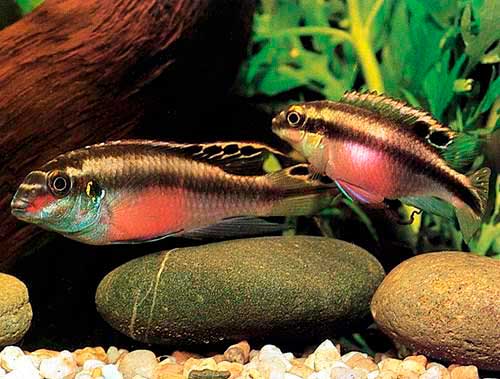
To plants parrots are loyal so that the flora can pick up yourself to your liking, only if they were suitable for the conditions of content.
And the conditions of content in the heroes of our narrative are the following water temperature 25 – 28 degrees Celsius, hardness 6 – 13 degrees, pH 6-7.
Aquarium parrotfish Breeding
For spawning parrotfish do not need to be transferred to a separate aquarium. They can spawn perfectly well in a common aquarium. Much more important for a successful spawning is the presence of a formed pair. To facilitate the creation of this pair of young parrotfish is better to keep small flocks of six to ten fish. After the formation of pairs, they should be dropped off and in no case do not contain a single fish together with the formed pair. The third extra will be mercilessly chased until the most unfavorable outcome for him.
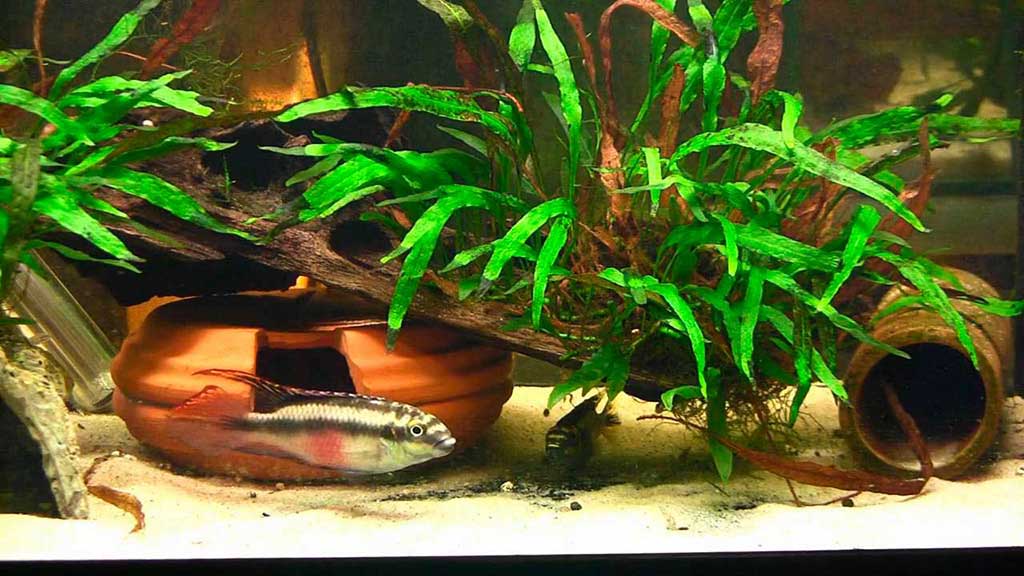
If you have a lonely fish can try to buy her a couple. as usual in cichlids will not do without scuffles, but after a week or two as a rule, the fish will realize the true meaning of existence and begin to breed and multiply making a concerted effort to nurse and protect the offspring.
Preparation for spawning
The beginning of preparation for spawning can be identified by the fidgety movements of the male, first near one of the caves you have provided, and then inside the cave. The female will try to get in, but the male will not let her in until the nest is completely ready according to his ideas. After the male has cleaned the cave inside most thoroughly he will switch places with the female and let her inside the shelter.
By this time the coloration of the fish will be the most intense. The female, turning belly up, will lay some eggs on the side wall of the cave or on its ceiling. After that, the male will fertilize these eggs, after which the procedure will be repeated. Spawning lasts from sixty minutes to several hours. During this time, the fish arrange a rounded clutch with a diameter of three to five centimeters. The eggs remotely resemble grains of rice.
Once the clutch is formed and fertilized, the fish take up their parental duties. The mother wraps her fins around the eggs, creating a water current around them, while the father guards the cave with the clutch and the female outside.
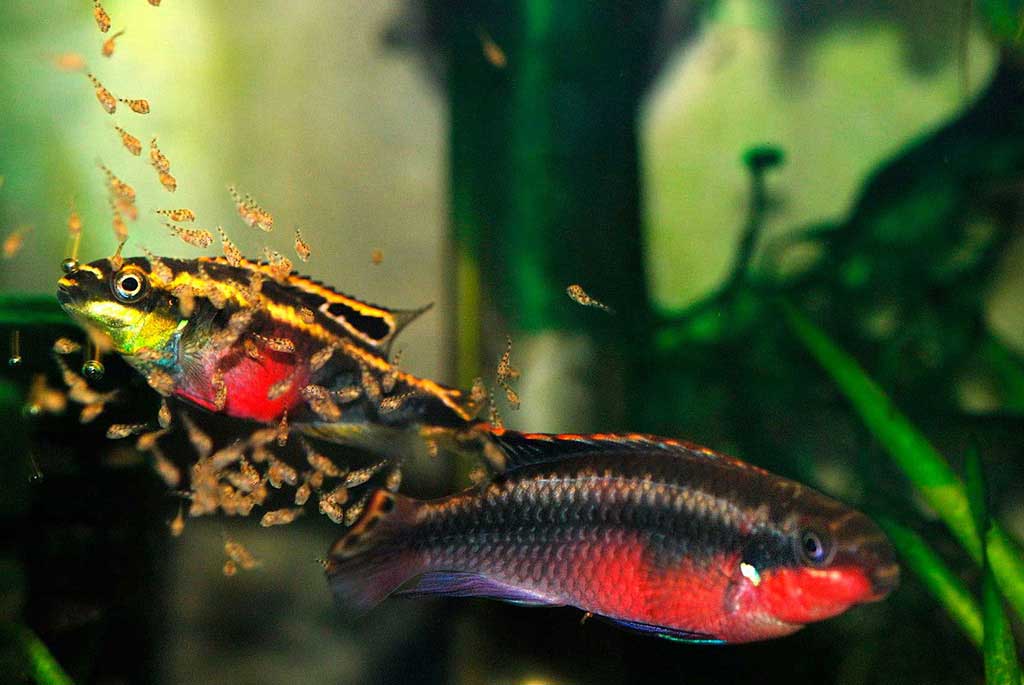
Aquarium parrotfish Fledgling boys
After about three to four days, larvae about one millimeter long emerge from the eggs and attach themselves to the side walls of the native cave. After a while they fall to the bottom, and the mother transfers them to a hole dug in advance in the sandy soil near the cave. On about the fifth or sixth day, the larvae assume a horizontal position and turn into fry.
From the first, this whole nursery begins to take walks in the surrounding countryside, moving farther and farther away from their manger each day, and rising higher and higher in the water column. But at the first danger, the mother corrals or carries her chads in her mouth to the saving trench near the native cave, and the father assumes the most belligerent look he can. It is not only the look, however. If a hapless trespasser does not come to his senses in time, he runs the risk of receiving the most moralizing beating regardless of his size (within reasonable limits, of course).
Fry feeding
The first days, the fry feed on zooplankton, which is found in the bottom layers of water, and then they begin to feed their parents, crushing in the mouth of moths or trubichnik, they throw this porridge in the hole with the fry and those with pleasure absorb this food.
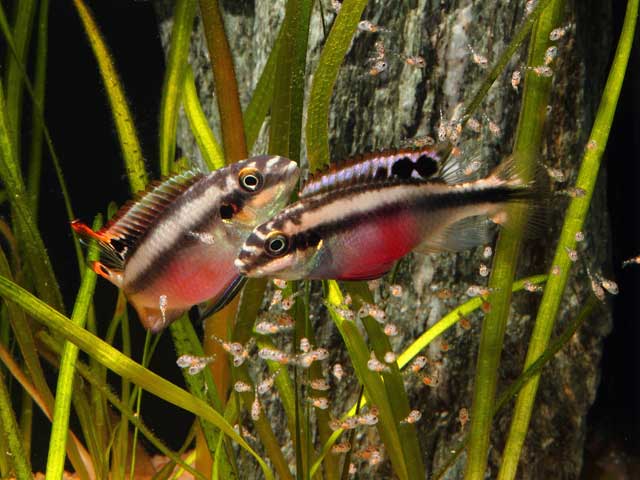
Fry grow quickly in ten to twelve days they can reach a centimeter in length.
Taking fry away from their parents while they are taking care of them should not be done.
- They are very caring parents, and you can hardly take better care of the fry than they do.
- Parents are able to protect their offspring from almost any danger.
- The loss of offspring causes these fish great pain and they calm down with great difficulty.
Detach mature fry can be about a month later, when they grow up, learn to independently find food and hide, and the parents weaken parental instinct and they are engaged in preparation for the next spawning.
This is such an amazing fish in every way aquarium parrotfish.
If you do not have the opportunity to acquire a large aquarium, but want to get acquainted with cichlids, to study their habits, I recommend that you pay your attention to dwarf species, one of which I told you today.
